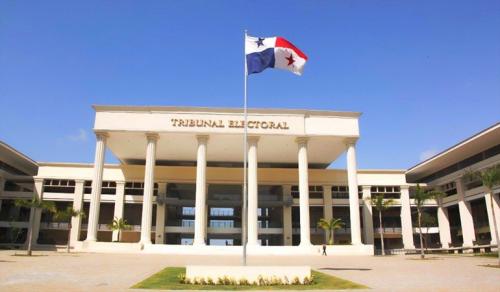Left and right in the elections
- Opinión

In one month, the Panamanian citizens will go to the polls to elect a new President of the Republic and some 850 elected officials. The electoral campaign officially opened a month ago and only four of the seven presidential candidates have presented programs of government.
Only the candidate of the Frente Amplio por la Democracia (FAD – Broad Front for Democracy), Saul Méndez, has put together a plan to face the social and economic crisis created by the neoliberal policy of the past 30 years. Ana Matilde Gómez, an independent candidate, has a program that her supporters call minimal. Meanwhile, Laurentino Cortizo, of the PRD, presents a program based on four pillars without further detail. The candidate of the governing Panameñista party, José Blandón, marks his distance from the administration of the present President, but has not defined his objectives.
In the propaganda and in the debates, no structural solutions to poverty, inequality and informal employment are put forward. They do not speak of the creation of jobs in the industrial sectors and in the countryside through a plan for investment. Everyone says that they want to be a part of the plans that the Chinese have for Panama. But they forget that it is they who have to propose the plans. They speak of a “high-speed train” (that appears to be a tortoise train), but the candidates do not know what purpose it will serve.
A hundred years ago, the “founding fathers” confessed that they did not know what Republic they were creating and what the US aimed for with the construction of the Canal. They had other priorities. Two hundred years ago, those who called on the liberator Simón Bolivar did not know the Colombian project. Mariano Arosemena and his partners had dreams of a commercial emporium. These were only dreams.
As with the liberals in the decades of 1950 and 1960, the right-wing candidates in 2019 promise to resolve the problems of water, of garbage, of education, of health and other popular demands. But no-one proposes a work plan that would contribute to the solution of these problems. They ask for our vote, and at the same time they are saying that we will have five years more of frustrations. The corruption and insecurity in the communities will remain the same.
What the Panamanian feels the most is the lack of opportunities for jobs and social security. In 2005, they privatized social security, creating a mixed (public-private) system of individual quotas. Workers, over just a decade, began to feel that they had been deceived and they did not receive their pensions. The candidates speak of more reforms in social security. What they should do is propose a system of solidarity that guarantees the payment of pensions when the worker retires.
In the debate, a gap was apparent between the so-called political left and its counterpart, the political right. We should be clear on what these two sectors represent. The left is a position that struggles for change. On the other hand, the right wants to conserve all the values and institutions that now exist.
The use of these terms goes back to the French Revolution of 1789, when a national (constituent) assembly convened. The champions of the Republic and of deepening the revolutionary process were seated on the left. On the other hand, those who supported the monarchy and the King at that time were seated on the right.
Since then, over nearly two hundred and fifty years, those who struggle for change are qualified as leftists. Those who uphold the established order are of the right. At present, those who defend the neoliberal policies that impoverish workers, peasants and indigenous peoples are right wing. Those who want to end the neoliberal policies and regulate the economy (putting it at the service of the welfare of the people) are left wing.
Who are the good ones and who are the bad ones? The answer is simple: it depends on which side you are. If you support the oligarchs of the right, your enemy is the people. On the contrary, if you support the people who want change (the left) you are in opposition to the oligarchy.
In this electoral process of 2019, the right (three candidates of the neo-liberal parties and the three independent ones) sustains that they will resolve the problems without changing the neoliberal economic model. That is to say, deregulate the economy so that the rentiers and speculators continue to concentrate wealth. The left, on the other hand, wants changes, beginning with the economic model and guaranteeing the security of the population.
April 4, 2019
(Translated for ALAI by Jordan Bishop)
– Marco A. Gandásegui, Jr., Professor of Sociology with the University of Panama and Associated Researcher with the Centro de Estudios Latinoamericanos Justo Arosemena (CELA)
http://marcogandasegui2017.blogspot.com/
Del mismo autor
- La pandemia no es el fin del capitalismo 23/04/2020
- Hay que masificar las pruebas contra un virus clasista 19/04/2020
- ¡Qué falta hacen los Comités de Salud de J. Renán Esquivel! 09/04/2020
- La desigualdad social y la desconfianza contribuyen a la epidemia 02/04/2020
- Hacen falta más ‘pruebas’ para ‘suprimir’ el coronavirus 26/03/2020
- La crisis del capitalismo y el coronavirus 19/03/2020
- Urge una movilización general para atacar el corona-virus 12/03/2020
- Se necesita liderazgo y transparencia para enfrentar el corona-virus 05/03/2020
- EEUU veta relaciones entre Panamá y China 27/02/2020
- Roberto Arosemena, sus ideas perduran y sus luchas continúan 20/02/2020
Clasificado en
Clasificado en:
Elecciones
- Zoe Alexandra 27/01/2022
- Aída García Naranjo Morales 22/12/2021
- Francisco Domínguez 21/12/2021
- Fernando de la Cuadra, Aglae Casanova 20/12/2021
- Francisco Domínguez 13/12/2021
